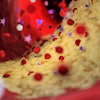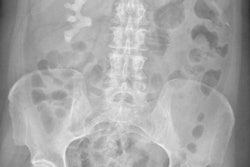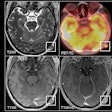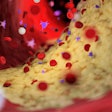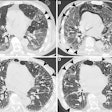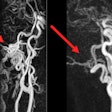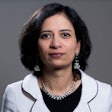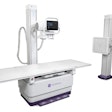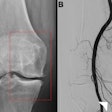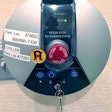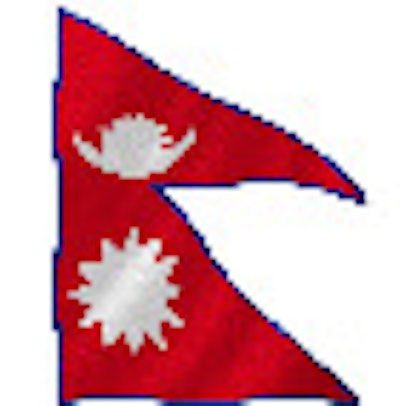
Nestled between India and China, Nepal is a mountainous country with major differences between urban and rural regions -- including access to imaging technology. But simple changes can make a big impact, according to Yogesh Jha, a former radiographer in Nepal who spoke with AuntMinnieEurope.com on the state of radiology in his home country.
A nation of approximately 29 million people, Nepal has some statistics that are truly eye-opening -- just like the landscape. With about 100 radiologists, the country has only one radiologist per 290,000 people, a handful of CT scanners, and 15 MRI systems. Don't go looking for 3- or 7-tesla machines either -- most systems are 1.5-tesla or below, and most of the CT systems are third-generation spiral scanners.
But despite the country's paucity of radiology resources, Nepal offers rewards to those who are committed and creative. For example, Jha developed a simple program to reduce radiation dose while working at the Dr. Iwamura Memorial Hospital and Research Centre in Nepal, and, as a result of his efforts, won the International Society of Radiographers and Radiological Technologists (ISRRT) Radiographer of the Year Award in 2010.
City versus country
Private-sector investment is beginning to improve the quality of imaging technology in Nepal, but inequity still exists because the rural population has so little access to CT and MRI services, which can mostly be found in the cities.
 Everywhere in the world deserves a basic diagnostic facility, according to Yogesh Jha from Nepal. Image courtesy of Philips Healthcare.
Everywhere in the world deserves a basic diagnostic facility, according to Yogesh Jha from Nepal. Image courtesy of Philips Healthcare."The problem is [that technology] is being introduced but [it is] concentrated for only a handful of people in general," said Jha, who is currently studying for a public health degree from the University of Melbourne in Australia.
At the 700-bed teaching hospital in western Nepal where Jha was located, only one radiologist was available. The radiology department had a spiral CT scanner, an ultrasound machine, and a general radiographic system -- and that was it.
When Jha worked in Nepal, a typical day included supervising the other radiographers, making the duty rosters, ensuring the smooth functioning of the department around the clock -- including intensive care unit coverage, as well as operating theater coverage -- and at the same time assisting radiologists in several procedures and, in particular, barium examinations.
"We used to have around 100 to 150 cases per day, that was on a general basis, but there was an enormous shortage of skilled manpower, especially during night duties, and that's the time when most traumatic injuries occur," he said.
It should be noted that medical training in Nepal is a little bit different -- there are training programs for a doctor of medicine (MD) radiologist and also the equivalent of a bachelor's degree in radiology and imaging. A person who receives a bachelor's degree is called a radiologic technologist. There is also a diploma radiographer, the lowest qualification, which is someone who holds a kind of associate degree, according to Jha.
Because of the shortage of skilled manpower, radiologists and technologists try to fill in the gap by working in several locations, which can lead to fatigue from overwork. They will often work in a public hospital, private clinic, nursing home, and other facilities all in the same day or week. The person is "working through day shifts and night shifts, continuously," Jha said.
Unfortunately, teleradiology is not being used in Nepal, so all the work falls on the shoulders of those who live there. "The work is just getting done," Jha added. In the remote regions, nonradiologist physicians and surgeons read radiology exams themselves, frequently without consultation with radiologists, who are mostly located in the country's largest cities.
The government has tried to balance this inequity by creating a policy to place recent medical graduates in primary care health centers, but these centers are in such bad condition they hardly have an x-ray machine, and if they do have one, it's poorly functioning.
However, even in such a resource-poor place, a small change can make a big difference, Jha said. Placing a diploma radiographer at primary health centers would help, but so would ensuring the facility's equipment functions properly.
"If your collimator is not functioning and that is resulting in a very significant amount of dose, you can convince the authority to just replace that and to educate the persons within the department regarding that," he said. "You properly collimate; you use a gonad lead apron. For pediatrics examinations, lower your mAs. These are simple and initial tools."
Lack of policies and enforcement
Neptal's lack of resources is a big problem, but the more pressing concern is the dearth of policies on staff qualifications, and the inability to enforce them.
"Most often the challenging problem is that less qualified persons are operating the equipment or servic[ing] them," he said. "Even a radiographer who is not very well-qualified is operating a CT scanner or MR [system]."
People who can properly operate equipment are unavailable, but mismanagement about staff hiring is also an issue.
"The private authorities, the private hospitals, they are generally profit-oriented," Jha said. "They think that when they are going to hire an expert they need to be paid more, so that's why they try to discourage that kind of thing. They want to hire someone who is not as qualified so they can pay less."
Radiologists don't complain because they are trained to think they only need to deal with the diagnostic aspects of radiology -- they report the film so they don't give much thought to the backend, to quality assurance or radiation protection. Both are mandatory by law, but enforcement is very lax.
"Only those persons who are well aware of radiation protection are practicing it on a personal level, but so far it's not being implemented in hard and fast law," he said. "Even for occupational monitoring of exposure, it does not have any infrastructure. There is a very urgent need of strict law enforcement regarding the radiation laws and accrediting professionals."
Medical practitioners also don't have much concern about radiation dose, Jha said, and he frequently sees imaging exams ordered that he believes are unnecessary.
"I have felt, personally working as a technologist in my department, that many examinations are unnecessary examinations," he said. "We can cut down on many views by detailed clinical examination, especially in the emergency room, where there are less trained doctors."
The Nepal Radiological Society has been lobbying the government to change policies and promote radiation protection -- with enforcement -- but to no avail. "It's very important to make clear radiation policies, to enable the people associated with the radiation technologists to reach that policymaking field at the government level, and to increase the infrastructure of the hospitals. And law enforcement by the accrediting councils, checking malpractice, and strictly implementing the scope of practice need to be followed," he said.
However, those in the radiology community don't need to wait for the government to do something to change radiology practice. Jha won the ISRRT Radiographer of the Year award for a small change he made that had a big effect. He worked with referring clinicians within the hospital to ensure secondary exams were ordered only when necessary to ensure improved outcomes, and was committed to providing patients with more information about their exams via posters throughout the waiting areas, according to ISRRT.
"My motive is that [every place in] the world should get at least [an] essential diagnostic facility. X-ray and ultrasound are the essential basic medical technology ... the world is at the cutting edge of scientific innovations in medical imaging, but still more than 80% of the clinical questions throughout the world are answered using plain x-ray and ultrasound," Jha said. "And even then, millions are devoid of that. So it's a very serious question that any person associated with this field should ask himself or herself. I'm looking forward [to] how we can manage [the] basic need of radiology [for] everyone."

